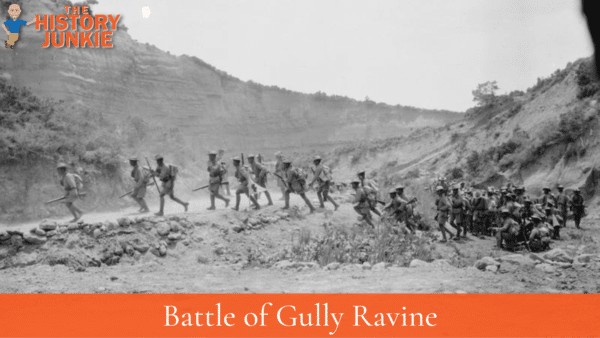In late June 1915, the British government, led by War Minister Lord Kitchener, agreed to send reinforcements to the Gallipoli Peninsula to help General Sir Ian Hamilton launch a renewed offensive in August. This would become known as the Battle of Gully Ravine.

While he waited for reinforcements, Hamilton was instructed by Kitchener to continue to attack the Turks. In June and July, a series of attacks were launched from Helles on the southern tip of the peninsula.
Jump to:
Prelude
The most notable of these was the Battle of Gully Ravine, which was fought on June 28, 1914, along the Aegean spine of the peninsula. The French had achieved a modest victory there a week earlier.
The newly appointed commander of the British 29th Division, Major-General Henry de Beauvoir de Lisle, proposed a limited objective attack along the Gully Ravine Spur. This was in accordance with Hamilton's directive that no sweeping breakthrough be attempted.
The 29th Division was supported by the Indian 29th Brigade and the 156th Brigade of the 52nd (Lowland) Division. Artillery support was weak, with only 77 guns and howitzers, but this was the best that could be managed given the ongoing artillery and ammunition shortages.
The attack was approved by Helles VIII Corps commander Aylmer Hunter-Weston, who hoped to seize the prominent hill feature, Achi Baba. The attack began with a preliminary bombardment on June 28.
The Battle
Progress was initially encouraging, with the 87th Brigade seizing the first two lines of Turkish trenches with light losses. The 86th Brigade then successfully advanced to the next two trench lines.
Meanwhile, the 29th Brigade, with offshore naval artillery support, successfully seized Turkish coastal trenches up to Fusilier Bluff.
However, the attack by the 156th Brigade, newly arrived in the sector, went badly. The brigade quickly reached Turkish trench lines without effective artillery support, but they were subsequently thrown back by the Turks at a heavy cost, including the loss of their commander, Scott-Moncrieffe.
The attack was ultimately a failure, and the Allies were unable to capture Achi Baba. However, the 29th Division did make some gains, and the attack helped to improve morale among the troops.
Turkish counter-attacks gradually regained control of the trenches that the Allies had seized on the Gully Ravine Spur, at even greater cost. As a result, while the Allies had made a small gain of about one kilometer along the coast, their gains elsewhere were negligible.
After a week of fighting, both sides suffered heavy losses. The British had lost 3,800 men, while the Turks had lost as many as 14,000.
